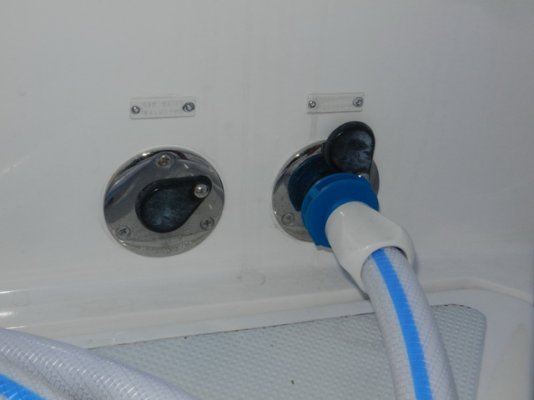I would NOT cross-connect seawater and potable water. EVER. Valves, checks, all those preventive devices can fail or be mismanaged. Just don't make the connection, you're asking for all sorts of potential bad things!!!
Photo is how I manage my washdowns on the bow. Switching from freshwater to seawater involves switching the quick-connect on the hose from one outlet to the other. I have another one of these in the aft cockpit that's connected to the same freshwater washdown pump system, which is independent of my domestic system. It has a separate Johnson Aqua-Jet 5.2 pump that is plumbed to my water tank. It supplies the freshwater outlets bow and cockpit. It provides a good 65psi, plenty of volume that rivals most dockside hoses. I also provided a 3-way valve where the FW washdown pump line connects to the bow piping- it happens to be adjacent to the domestic line. So with that valve, I can choose between the line to the bow or the main piping system, enabling me to pressurize the main system from the washdown pump in the event of a failure of the house system pump. Yes, I've used it.
I also installed a 2nd Johnson pump in the bow to a thru-hull, it provides the same pressure to the raw water washdown quick-connect. We have unlimited seawater under good pressure to wash the anchor, and we can switch over to the freshwater side to finish with a freshwater rinse off. It's one of the most useful projects I've completed. We anchor a lot, so it's very handy. I keep the seawater pump switched off normally, it's handy to power up when we head out on deck. Pumps are quite reliable.
The cockpit hose connection is used even more for freshwater rinsing the dinghy, swim platform, cockpit, dog, etc. It is used a number of times a day, I would not be without it. The quick connects have been reliable, they're stainless construction, in service 9 yrs. Only require occasional silicon grease to lube the twist lock insert, I keep spares of those.

